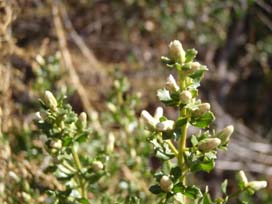
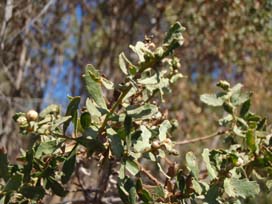
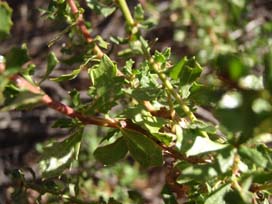
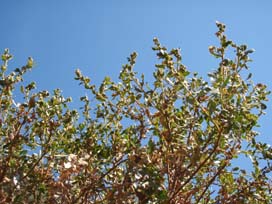
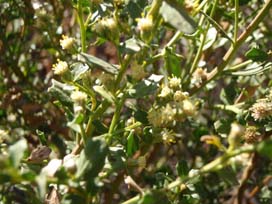
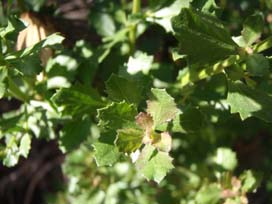
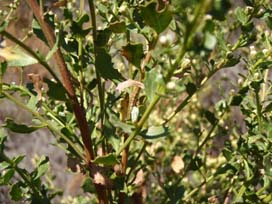
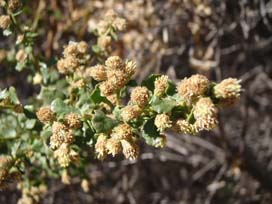
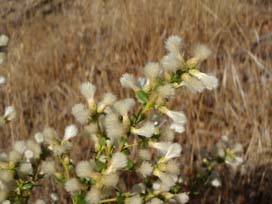
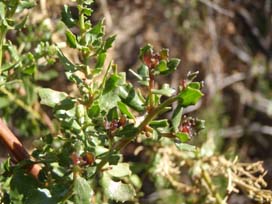
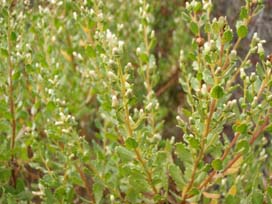
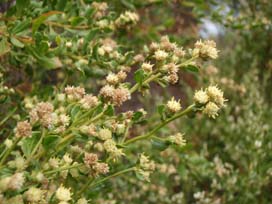
coyote brush
Baccharis pilularis
Family: Asteraceae.
Type: Large evergreen shrub.
Branching: Alternate.
Leaves: Leaves are wedge-shaped, broader at the tip than at the base, with highly variable toothing of their margins. Leaf size varies widely depending upon the amount of sun they receive. The wedge shape of the leaves, and their more yellow-green color, helps distinguish the leaves from those of oaks (which apparently can be confusing). Very new leaves can be quite red, as we have discussed for other plants before.
Twig: Branches and twigs have a striped appearance, and are much more fragile-looking than oaks. Young branches can be green, older ones can be red to brown.
Fruit & Flower: Flowers are in tight heads at the tips of branches. Coyote brush is dioecious (Greek for "two houses"), so any given plant has only male flowers or female flowers, not both. Female flowers have white tufts that look like the fur of a coyote, thus the name.
Miscellaneous: This is a major component of the northern California scrub, because it is evergreen. It is also found in woodlands. It is a very early successional plant, the first shrub to colonize into grasslands, because it makes many seeds that disperse well by air. Near the coast, in windy areas, it grows almost as a mat. On the other hand, at Jasper Ridge is was lusher and more yellow (last two photos; the first is a female, and the second is a male, incidentally). It is not fire-dependent, but it does well after fire due to its aggressive colonization of disturbed areas.
 |
 |
 |
 |
 |
 |
 |
 |
 |
 |
 |
 |